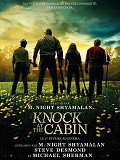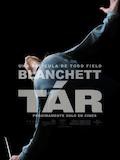Attack of the clones

Star Wars Episode 2 - Attack of the clones
États-Unis, 2002
De George Lucas
Scénario : Jonathan Hales, George Lucas
Avec : Hayden Christensen, Samuel L. Jackson, Christopher Lee, Ewan McGregor, Natalie Portman
Durée : 2h22
Sortie : 01/01/2002






Disconcerting. It is the first word that comes to mind. Disconcerting because after 3 teasers and a trailer, without forgetting all we heard since 1997, we were expecting either a love story (that frightened the most skepticals of all) or a big action film (which pleased those disappointed by The Phantom Menace). The result is a very particular movie
Attack of the Clones is a dark movie. A film that starts with scenes taking place during the night, dark and cold-coloured sets, etc. The whole first part of the film will be impregnated by that aspect. An unfortunately arduous first half, where once more George Lucas must introduce now older characters, but especially, from the beginning, he has to cut into the development of a really complex plot. Its total understanding will not be achieved before the very last part of the picture during which finally appear the few explanations supposed to enlighten us.
The scheme of the script is yet very classical, even if, as it is a habit in the franchise, several parallel plots are taking place, in order to create the illusion that the story isn’t actually linear. However, the first hour, following Obi-Wan investigation while observing Anakin derive towards a darker fate, gets too long. The treatment of these two stories, taking account of the events of Episode I, reveals how the characters of this new trilogy establish themselves as being just as interesting as were those of the first one, and maybe even more. For instance, Obi-Wan is here a real character with his intricate place in the film, whereas he was only a secondary part in The Phantom Menace, not to mention Anakin, whose evolution gets more and more interesting in this episode. We can see the early beginnings of his downfall to the Dark Side of the Force in this kid wishing to grow out of a fearful childhood and whose increasing ambitions will suffer wrong choices.
The bad rhythm of that first hour remains what is most regrettable in the piece. Lucas’ biased decision to adopt a very slow pace in the first half confuses the audience and even the few action scenes seem to lack energy. Mainly because of a heavy plot, the presence in its integrality of which is unluckily necessary in order to present all the political background of the story. The incursion of that political context appeared in the previous instalment of the saga, with the scenes at the Senate and the first manipulations of Palpatine. A character who, here again, acts in the shadows so to bring his plan to success. From that point of view, at the end of the film, remembering that first part after having understood it all, its pertinence is more obvious. Once again, we’re waiting for more…
The second half of Episode II is a totally different movie. We literally go from darkness to light by transporting the action from night-dominating planets such as Coruscant and Kamino to the brighter, day-dominating planets that are Tatooine and Geonosis, the desert region landscapes of which bring warm colours to the film. The displacement of the plot results in a real contrast with what has preceded : the action takes a high profile in sequences of epic proportions leading to the bursting of the famous Clone War. It is almost impossible to put down in words the orgasmic response of a fan at the sight of those scenes, after the setting of the first half. Everything appears as clearer, more obvious and justified.
The romance that could be feared as annoying or boring isn’t. It is treated quite briefly without being neglected nonetheless. These scenes figure some of the best dialogues in all of Star Wars. The romantic aspect is set aside for this second half, only to come back in a more powerful way at the end. George Lucas is faithful to himself, continuing his epic and surprising us with perfect special effects that serve a story that is richer, episode to episode. Moreover, the directing is really admirable, despite its rhythm problems, making this instalment one of the most beautiful of the franchise. Attack of the Clones is Lucas’ great Greek and Shakespearian tragedy, complete with the political story and the great characters, and also many references (to old automobiles like in American Graffiti, and B-movies like Ray Harryhausen’s work, or westerns with the character of Jango Fett).
The fans will love the quasi-absence of Jar Jar Binks (10 minutes of screen time) but mostly they will appreciate, after an upsetting start, the avalanche of action scenes concluding in the usual final lightsaber fight and a return to the darker atmosphere of the beginning of the film, foreshadowing Episode III…
En savoir plus
Tourner en numérique - L'Attaque des Clones est donc un des premiers films, avec Vidocq, a avoir été tourné en HD 24-P. Ce nouveau format qui, plus encore que le film, sera la véritable star lors de la projection de l'Episode II à Cannes, risque de marquer une révolution durable dans l'histoire de la technologie et du cinéma en général. C'est surprenant à dire, mais le nouveau volet de la saga Star Wars a été tourné en vidéo. Une vidéo bien spéciale, mais de la vidéo quand même.
Le HD 24-P repose sur deux principes de base: une résolution largement supérieure à celle de la vidéo traditionnelle et proche de la qualité 35mm, et une prise de vue s'effectuant à la cadence de 24 images par seconde. La vidéo normale, elle, tourne à 25 images/seconde, ou plutôt à 50 demi-images/seconde (chaque trame étant entrelacée). Une seconde de 24-P, comme son nom l'indique, est donc constituée de 24 images 'pures', à savoir non entrelacées, d'où le 'P' qui signifie 'progressif'. Le HD 24-P est donc transposable, trame par trame, directement sur du 35mm, sans aucun problème de kinéscopage. Plus que de la vidéo, le 24-P est plutôt de la 'pellicule numérique'. Lire la suite


























